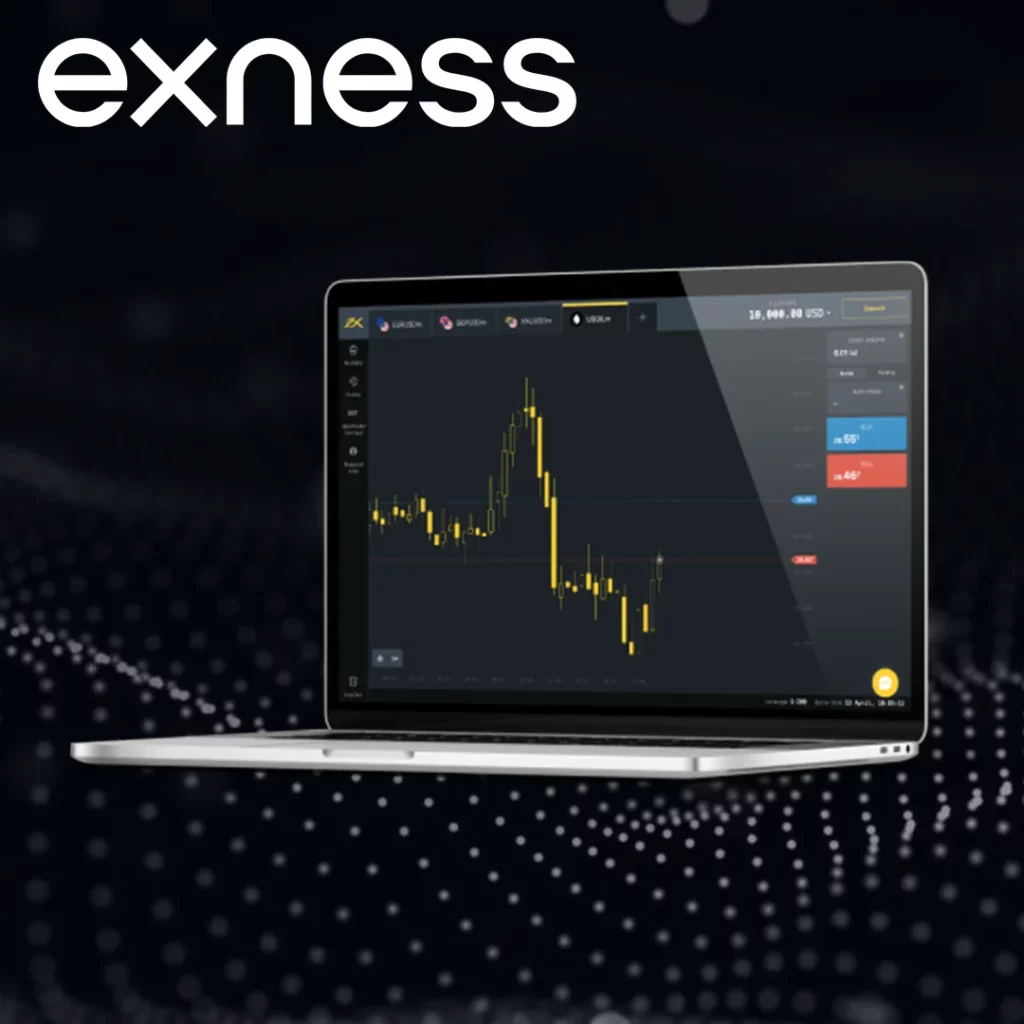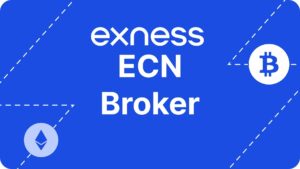Leverage on Exness is a powerful feature that helps traders manage larger market positions with a smaller upfront investment. In simple terms, it lets you borrow funds from the broker to increase your trading potential. Let’s break down how leverage works, its effects on your trades, and how you can use it carefully to avoid unnecessary risks.
What Is Leverage and How Does It Impact Your Trades?
Leverage allows traders to amplify their buying power by using borrowed funds from the broker. Essentially, it means you can open larger trades than what your actual capital would normally allow. For example, with leverage of 1:100, a $100 deposit in your account can control a trade worth $10,000.
| Leverage Ratio | 1:10 | 1:50 | 1:100 | 1:200 | 1:500 | 1:2000 |
| Your Capital | $100 | $100 | $100 | $100 | $100 | $100 |
| Trade Size | $1,000 | $5,000 | $10,000 | $20,000 | $50,000 | $200,000 |
| Risk Level | Low | Medium | Medium-High | High | Very High | Extremely High |
| Suitable For | Beginners or low-risk traders | Moderate experience | Experienced traders | High-risk strategies | Advanced traders with strategies | Professionals only |
Note: Higher leverage can amplify both gains and losses. This is why it’s crucial for traders to use leverage only if they fully understand its risks and have a clear strategy in place.
Why Choose Exness for Leverage?
Exness broker offers several leverage features that cater to different trading styles and skill levels:
- Dynamic Leverage
This feature automatically adjusts based on the size of your trades and the current market conditions. It helps traders manage risk more effectively, especially during periods of high market volatility. - Customizable Leverage
Traders can select leverage levels of up to 1:2000, depending on their trading experience and risk tolerance. This provides flexibility to suit different trading strategies and goals. - Unlimited Forex Leverage
Certain account types offer no maximum leverage, making them ideal for professional traders who require maximum market exposure. - Risk Management Tools
Exness provides tools like Stop Loss, Take Profit, and Trailing Stop. These features are designed to help minimize potential losses while securing profits during trades. - Negative Balance Protection
This ensures that your account balance can never fall below zero, protecting traders from incurring excessive losses. - Instant Margin Call Alerts
Traders are immediately notified when their margin levels become critically low, reducing the likelihood of unexpected account closures.
Comprehensive Overview of Margin Requirements
| Instrument | Leverage | Position Size | Required Margin | Typical Spread | Margin Level (%) | Details |
|---|---|---|---|---|---|---|
| EUR/USD | 1:200 | $10,000 | $50 | 0.1 pips | 100% | Ideal for moderate-risk forex trading. |
| GBP/USD | 1:500 | $20,000 | $40 | 0.2 pips | 50% | Large trades, higher risk exposure. |
| Gold (XAU/USD) | 1:100 | $15,000 | $150 | 1.0 pips | 100% | Higher margin due to volatility. |
| NASDAQ Index | 1:50 | $5,000 | $100 | 2.0 pips | 80% | Suitable for volatile index trading. |
| Bitcoin (BTC/USD) | 1:20 | $2,000 | $100 | 30.0 pips | 150% | Lower leverage for high volatility. |
| Crude Oil (WTI) | 1:100 | $30,000 | $300 | 5.0 pips | 100% | High margin due to price sensitivity. |
Explanation: Lower leverage means you’ll need to set aside more margin to open a position. However, it also reduces the risk of your account balance depleting quickly in volatile markets.
How to Change Leverage on Exness: A Step-by-Step Guide
If you want to adjust your leverage settings on Exness, follow these simple instructions:
- Sign in to Your Exness Account Visit the Exness website and log in with your username and password.
- Go to the ‘Personal Area’ Once logged in, head to the “Personal Area” section. Choose the specific account for which you want to change the leverage.
- Access Leverage Settings Navigate to the “Settings” tab and locate the “Leverage” option.
- Adjust Your Leverage Select the leverage ratio you prefer (e.g., 1:50, 1:500, 1:2000) from the available options.
- Save the Changes Click the “Confirm” button to apply the new leverage setting. The updated leverage will take effect immediately.

Comparing Leverage Options on Exness Accounts
Here’s a detailed comparison of leverage limits, deposit requirements, and trading conditions across different account types on Exness:
| Account Type | Minimum Deposit | Maximum Leverage | Trading Instruments | Spreads | Commission |
| Pro | $200 | Up to 1:2000 | Forex, Metals, Indices | From 0.1 pips | None |
| Raw Spread | $500 | Up to 1:2000 | Forex, Metals | From 0.0 pips | $3.5 per lot per side |
| Standard | $1 | Up to 1:2000 | Forex, Metals, Cryptos | From 0.3 pips | None |
| Standard Cent | $1 | Up to 1:2000 | Forex | From 0.5 pips | None |
| Zero Spread | $500 | Up to 1:2000 | Forex, Commodities | Fixed at 0.0 pips | $3.5 per lot per side |
Each account type is tailored to suit different trading needs. For example, beginner traders may opt for a Standard or Standard Cent account due to the low minimum deposit and no commission fees. On the other hand, experienced traders might prefer Raw Spread or Zero Spread accounts for tighter spreads and greater cost transparency.
How Leverage Influences Trading Outcomes
| verage Ratio | Account Balance | Trade Size (Lots) | Profit Potential | Loss Potential | Risk Level | Details |
|---|---|---|---|---|---|---|
| 1:10 | $1,000 | 0.1 | $100 | $100 | Low | Suitable for beginners. |
| 1:50 | $1,000 | 0.5 | $500 | $500 | Medium | For moderate-risk traders. |
| 1:100 | $1,000 | 1.0 | $1,000 | $1,000 | High | Requires trading experience. |
| 1:500 | $1,000 | 2.0 | $2,000 | $2,000 | Very High | Advanced traders only. |
| 1:2000 | $1,000 | 4.0 | $4,000 | $4,000 | Extremely High | For professionals; very risky. |
This simplified table shows how leverage impacts risk and profit potential, emphasizing the importance of experience at higher levels.
Strategies to Manage Risk with Leverage
To use leverage effectively and minimize risks, it’s important to apply proper risk management strategies. Here are some of the most useful tools and how they can help you trade more safely:
Stop Loss
This tool automatically closes a trade when your losses reach a preset limit. It’s essential for managing potential losses and should always be used to avoid excessive exposure.
Take Profit
Take Profit locks in your earnings by closing a trade when the price hits your target. It’s a great way to secure gains after favorable price movements.
Trailing Stop
A Trailing Stop adjusts as the market moves in your favor, protecting your profits while still allowing for potential growth. It’s especially useful in volatile or trending markets.
Margin Call Alert
This feature notifies you when your margin levels drop too low, giving you a chance to adjust your positions. It helps prevent your trades from being forcibly closed.
Negative Balance Protection
This ensures that your account balance can never go below zero, shielding you from losing more than you’ve deposited. It’s particularly important when using high leverage.
Diversification
By trading across multiple assets, diversification spreads risk and limits the impact of market volatility. It’s a key strategy for long-term stability.
Using these tools ensures that you remain in control of your trades, even when operating with significant leverage. Proper risk management is essential to protect your investments and achieve consistent results.
Best Practices for Using Leverage Responsibly
Here are some tips to manage leverage effectively and protect your trading account:
- Start with Lower Leverage: Beginners should stick to lower ratios to reduce the risk of large losses.
- Use Stop Loss and Take Profit Orders: These features help protect your capital by limiting losses and locking in profits.
- Keep an Eye on Margin Levels: Regularly monitoring your margin levels can help you avoid margin calls and unexpected account liquidations.
- Diversify Your Trades: Don’t put all your money into one asset. Diversifying across different instruments reduces overall risk.
- Stay Informed: Follow market trends and adjust your leverage to align with current volatility.
Final Thoughts
Leverage is a double-edged sword in trading—it can amplify your returns but also expose you to significant risks. By understanding how leverage works, especially on platforms like Exness, and following sound risk management strategies, you can maximize your potential while keeping your losses in check. Always approach trading with caution, and remember that preserving your capital is just as important as growing it.

Trade with trusted broker Exness today
See for yourself why Exness is the preferred broker of over 800,000 traders and 64,000 partners.
Frequently Asked Questions (FAQs)
How does leverage impact margin requirements?
Leverage lowers the amount of margin you need to open a trade. This means you can take control of larger positions with a smaller amount of your own money.



